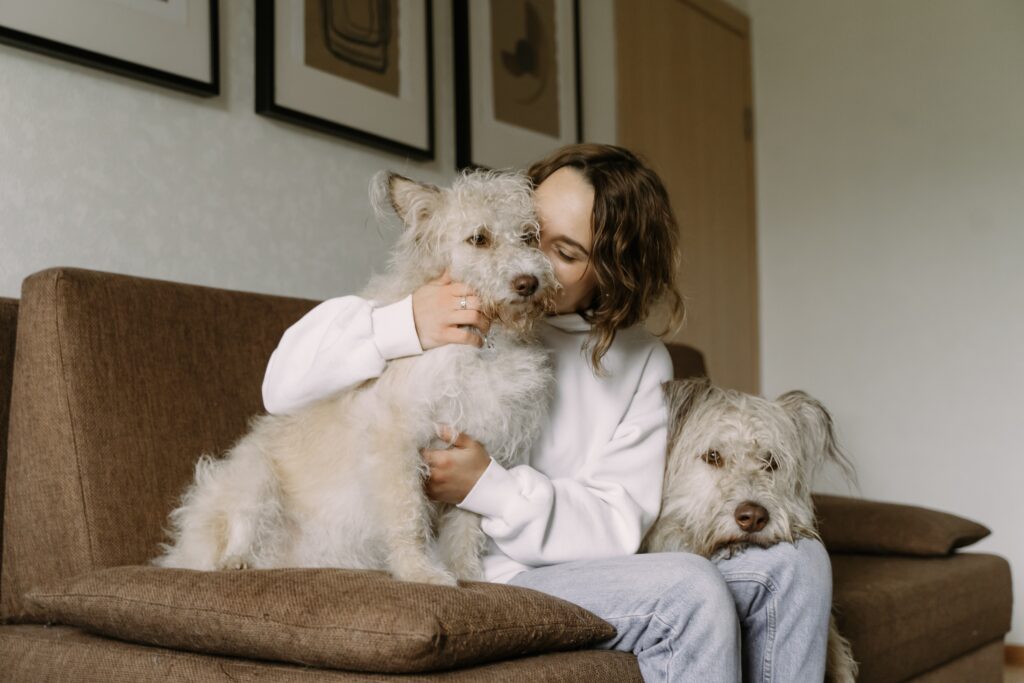Pets Provide Exercise And Reduce Stress In Older Adults

Pets Provide Exercise And Reduce Stress In Older Adults: You may think that as you get older taking care of a pet might be too much work or responsibility. However, owning a pet can actually provide you with numerous benefits, including exercise and stress reduction. Pets, such as dogs and cats, can encourage you to stay active by going for walks or engaging in playtime.
Not only does this physical activity help maintain your mobility, but it also provides an opportunity to bond with your furry companion. Furthermore, the companionship and unconditional love that pets offer can greatly reduce your stress levels and promote a sense of well-being. But there’s more to discover about the positive impact pets can have on your life, so keep reading to uncover the fascinating ways in which pets can enhance your overall health and happiness.
Benefits of Pet Ownership for Older Adults
Owning a pet can greatly benefit older adults, providing them with increased physical activity, reduced stress, and improved emotional well-being. For older adults, it can sometimes be challenging to maintain regular physical activity levels. However, owning a dog can be a great motivator to stay active. Walking a dog regularly requires physical effort, leading to increased exercise and improved cardiovascular health. Not only does this benefit your physical well-being, but it also helps to lower blood pressure and reduce the risk of heart disease.
In addition to physical benefits, interacting with pets can have a positive impact on your mental health. Spending time with your furry friend can help reduce stress and anxiety levels. The simple act of petting a dog releases endorphins, which are natural mood boosters. This can contribute to a greater sense of calm and overall emotional well-being.
Furthermore, pet ownership can provide valuable social interaction for older adults. Taking your dog for walks or visiting pet-friendly places can lead to meaningful conversations with other pet owners. Pets act as a conversation starter and can help you connect with others who share a love for animals. This social interaction can help combat feelings of loneliness and improve overall mental health.
Physical Activity and Pets: The Perfect Combination
Are you looking for a way to boost your physical activity levels while also reducing stress? Look no further than the perfect combination of pets and physical activity. Owning a pet, particularly a dog, has been shown to increase physical activity among pet owners. Studies have found that pet owners engage in more frequent exercise, with dog walking being associated with moderate and vigorous activity. By incorporating pets into your exercise routine, you can enjoy the health benefits of increased activity levels and find stress relief at the same time.
Health Benefits of Pets
Pets provide a perfect combination of physical activity and companionship, offering numerous health benefits for individuals of all ages. When it comes to exercise, owning a pet, especially a dog, can significantly increase your physical activity levels. Walking a dog regularly not only promotes exercise but also encourages more frequent moderate and vigorous activities, ultimately contributing to your overall physical health.
In particular, dog owners tend to have more walking time and take more steps per day, leading to improved cardiovascular health. Moreover, the human-animal bond formed through pet ownership has been shown to reduce stress, anxiety, and depression, especially in older adults. The presence of a pet can provide comfort, companionship, and a sense of purpose, contributing to your psychological well-being. So, whether you’re young or old, having a pet can bring a wealth of health benefits to your life.
Increased Activity Levels
With the perfect combination of physical activity and companionship, pets have been proven to significantly increase activity levels in older adults, particularly when it comes to owning a dog. A study conducted on older adults found that pet ownership, especially dog ownership, is associated with higher physical activity levels. The benefits of owning a dog extend beyond companionship; they motivate their owners to engage in regular exercise.
Dog owners not only engage in physical activity more frequently but also participate in more moderate and vigorous exercise. On average, dog owners walk an additional 22 minutes and take 2,760 more steps per day compared to non-dog owners. This increase in activity levels has a significant impact on the overall health and well-being of older adults. So, if you’re looking to stay active and reap the benefits, consider becoming a proud dog owner.
Stress Reduction Through Pets
If you’re feeling overwhelmed and in need of some stress relief, look no further than the furry companions that can bring you comfort and tranquility. Pets provide more than just companionship; they can also help reduce stress in older adults. The human-animal bond is a powerful connection that has been shown to have numerous health benefits, including stress reduction. Interacting with pets has been proven to lower blood pressure, reduce anxiety, and provide emotional support.
When you engage with your pet, whether it’s through playing, petting, or simply being in their presence, it releases endorphins in your brain that help alleviate stress. The physical activity involved in taking care of pets, such as walking a dog or playing with a cat, also contributes to stress reduction. So, if you’re looking for a natural and enjoyable way to reduce stress, consider the positive impact that pets can have on your well-being.
How Pets Help to Reduce Stress in Older Adults
Reducing stress in older adults can be achieved through the presence of a furry companion, as research has shown that the simple act of petting a dog can have profound effects on their well-being. Petting a dog not only provides comfort and relaxation, but it also has physiological benefits. When you spend time with a dog and pet them, it can lower the stress hormone cortisol in your body. This helps to reduce feelings of anxiety and tension, promoting a sense of calm and tranquility.
In addition to reducing stress levels, interacting with dogs can also increase the production of oxytocin, a hormone that promotes feelings of happiness and well-being. The social interaction with dogs can alleviate feelings of loneliness and depression, which are common among older adults. Simply having a furry companion by your side can provide a sense of companionship and emotional support, leading to improved mental health.
Owning a dog can also have positive effects on your physical health. Dog ownership is associated with increased physical activity levels, as dogs require regular exercise. As a dog owner, you are more likely to engage in daily walks and physical activities, which contribute to improved cardiovascular health and overall fitness. The American Heart Association even endorses dog ownership as a way to prevent cardiovascular diseases.
Furthermore, dogs can provide assistance and support to older adults with specific health concerns. They can be trained to help with mobility issues or disabilities, providing companionship and a sense of security. Having a furry friend to rely on can make a significant difference in your daily life and overall well-being.
The Role of Pets in Lowering Blood Pressure
Are you looking for natural ways to lower your blood pressure? Owning a pet can be a great solution. Not only does petting a dog release feel-good hormones that reduce stress, but it can also lower your blood pressure. The American Heart Association even endorses dog ownership as a way to promote heart health. So, consider welcoming a furry companion into your life and experience the blood pressure benefits and stress reduction effects that come with pet companionship.
Blood Pressure Benefits
Interacting with pets can have a significant impact on your blood pressure, as it has been shown to lower the stress hormone cortisol and increase the feel-good hormone oxytocin. This can lead to better cardiovascular health and overall well-being. Research has found that petting and holding an animal can help reduce blood pressure in individuals.
Additionally, owning a dog can serve as a motivation for regular physical activity, as dog owners must walk their pets daily. This can improve physical function and contribute to lower blood pressure. Furthermore, pets provide social support, helping to alleviate feelings of loneliness and depression in older adults. The positive effects of pet ownership on blood pressure and overall health make them valuable companions for better overall health.
Stress Reduction Effects
Pets play a crucial role in lowering blood pressure by reducing stress levels and promoting a sense of well-being. Research has shown that spending time with dogs and cats can have a significant impact on stress reduction. Petting a dog can lower the stress hormone cortisol, while interacting with dogs can increase levels of the feel-good hormone oxytocin, contributing to lower blood pressure. Moreover, dog ownership often leads to increased physical activity due to the regular walks required. This increase in exercise can have positive effects on heart health, potentially reducing the risk of heart disease.
Additionally, owning a pet provides emotional support and companionship, improving overall quality of life. Studies have even suggested that pet ownership, particularly dog ownership, can have positive effects on cognitive function. So, whether it’s a playful pup or a cuddly cat, having a pet can provide numerous stress reduction benefits and contribute to a healthier lifestyle.
Pet Companionship Advantages
Pet companionship offers numerous advantages in lowering blood pressure and promoting overall well-being in older adults. Research has shown that owning a pet, especially a dog, can lead to improved cardiovascular health. Dog owners who walked their pets regularly were found to engage in regular physical activity, meeting the physical activity guidelines for healthy aging. This increased physical activity contributes to improved heart health and overall physical well-being.
Additionally, pet owners have been found to have lower blood pressure compared to non-pet owners. Interacting with pets can lead to decreased cortisol levels and increased oxytocin, which contributes to stress reduction and better blood pressure management. The human-animal bond plays a significant role in human health, and owning a pet can provide companionship, alleviate feelings of loneliness, depression, and anxiety, and offer a sense of purpose.
Pets as Companions: Reducing Loneliness and Anxiety
When it comes to combating feelings of loneliness and anxiety, having a furry companion by your side can make all the difference. Pets provide more than just love and companionship; they have been proven to reduce stress and anxiety in older adults. Interacting with pets has a profound impact on mental health, improving overall well-being.
Research has shown that spending time with pets can lower stress levels, decrease feelings of anxiety, and alleviate symptoms of depression. The unconditional love and support offered by pets create a sense of comfort and security, reducing feelings of loneliness. The bond between older adults and their pets has even been linked to decreased blood pressure and cholesterol levels.
Owning a pet also encourages physical activity, especially through activities like walking dogs. Daily exercise not only benefits the pet’s health but also improves the overall well-being of older adults. Regular exercise aids in maintaining physical fitness, preventing health issues, and boosting mood and energy levels.
The companionship provided by pets is particularly beneficial for older adults who may be experiencing social isolation or loss. Pets offer a sense of purpose, fulfillment, and joy, bringing happiness to their owners’ lives. The responsibility of caring for a pet provides a daily routine and a reason to get up in the morning, reducing feelings of anxiety and providing a sense of structure.
Choosing the Right Pet for an Active Lifestyle
To ensure that your furry companion fits seamlessly into your active lifestyle, it is important to choose the right pet that can keep up with your energy levels and exercise needs. As dog and cat owners, you already know that pets can improve your overall well-being. But when it comes to choosing a pet for an active lifestyle, there are a few factors to consider.
If you’re an active individual who enjoys regular exercise, a dog may be the perfect choice for you. Dogs are naturally energetic and require daily physical activity to stay healthy. They love going on walks, jogs, and hikes with their owners. This not only helps you stay active but also provides an opportunity for bonding and companionship. Regular exercise with your dog can help reduce the risk of heart disease and lower cholesterol levels.
On the other hand, if you prefer a more independent pet, a cat might be a better fit. While cats may not require as much physical exercise as dogs, they still benefit from playtime and interactive toys. Engaging in play with your cat can provide mental stimulation and help keep them physically fit. Additionally, cats are known to be great explorers, so allowing them outdoor access can provide them with opportunities for exercise and enrichment.
When choosing a pet for an active lifestyle, it’s important to consider your own energy levels and exercise preferences. Remember to provide your furry companion with regular exercise and mental stimulation to ensure their well-being. Whether you choose a dog or a cat, your active lifestyle will be enhanced by the presence of a loving and energetic pet.
Incorporating Pets Into Daily Exercise Routines
Ready to incorporate your furry friend into your daily exercise routine? Engaging in regular dog walks not only increases your physical activity but also promotes exercise for your pet. Use playtime and interactive toys to encourage movement and keep both you and your pet active. You can also explore pet-friendly exercise classes or activities, such as dog yoga or hiking, to further enhance your daily routines.
Exercise Routines With Pets
Incorporating your furry companion into your daily exercise routine not only increases your physical activity levels but also provides motivation and enjoyment along the way. According to the American Heart Association, regular exercise is essential for reducing the risk of heart disease and improving overall health outcomes in older adults. Dog walking is a great way to incorporate exercise into your daily routine, as it serves as both exercise for you and essential training for your pet.
Not only does dog walking provide physical activity, but it also offers social support and opportunities for community engagement. Owning a pet can contribute to better mental and emotional health, reducing stress and lowering blood pressure. So, why not make your exercise routine more enjoyable and fulfilling by including your furry friend? Remember to always consult with a healthcare professional before starting any new exercise regimen.
Benefits of Pet Interaction
As you incorporate your furry companion into your daily exercise routine, you not only increase your physical activity levels but also experience the numerous benefits of pet interaction. Regular interaction with pets, such as walking a dog, can play an important role in maintaining your physical and mental health. By spending time exercising with your dog, you can reduce the risk of heart disease and improve cardiovascular health. Walking a dog that uses high levels of energy can increase your own activity levels, leading to a healthier lifestyle.
Additionally, pet interaction has been shown to reduce stress levels and lower blood pressure. The human-animal bond established through pet interaction can also alleviate feelings of loneliness, provide emotional support, and contribute to better cognitive function. By incorporating your pet into your exercise routine, you can reap these incredible benefits while enjoying the companionship and love of your furry friend.
Pets and Mental Health: A Natural Stress Reliever
Pets have been proven to have a positive impact on mental health by reducing depression, anxiety, and stress levels in individuals. The benefits of caring for a pet go beyond just companionship and love. Owning a furry friend can be a natural stress reliever, providing emotional support and comfort during challenging times.
Interacting with pets, such as dogs and cats, has shown overall positive effects on mental health. They have the ability to reduce stress, anxiety, and depression, offering a sense of comfort and security. The human-animal bond, strengthened by owning a pet, has been associated with psychological and physical benefits in people of all ages.
Pets can trigger feelings of happiness and joy, counteracting negative emotions like anger, sadness, anxiety, and depression. They provide a sense of purpose and responsibility, which can be especially beneficial for individuals who may feel isolated or lonely. Simply spending time with a pet can lower stress levels and promote relaxation.
Even if you don’t own a pet, you can still experience these mental health benefits. Consider volunteering at an animal shelter or offering to walk a neighbor’s dog. These small acts of kindness not only benefit the animals but can also provide you with opportunities for leisure walking and social interaction, which can lower stress and improve your overall well-being.
Pets and Heart Health: The Connection Explained
Improving heart health can be achieved through the companionship and care of a furry friend. The connection between pets and heart health is well-established, with several studies highlighting the benefits of pet ownership on physical health, particularly in older adults. Heart disease is a prevalent concern among older individuals, but the presence of a pet can make a significant difference in reducing the risk factors associated with this condition.
Pet owners, especially those who have dogs, tend to engage in more physical activity compared to non-pet owners. The responsibility and motivation that come with owning a dog often lead to regular walking, which is a form of moderate-intensity exercise. This increased physical activity can have a positive impact on cardiovascular health, improving heart function and reducing the risk of heart disease.
Furthermore, petting and interacting with animals, especially dogs, have been shown to lower blood pressure. High blood pressure is a major risk factor for heart disease, and the calming effect of petting a dog can help regulate blood pressure levels, contributing to improved heart health.
In addition to the physical benefits, the emotional support provided by pets can also play a role in heart health. Loneliness and depression are common issues among older adults, and these conditions can have a negative impact on cardiovascular health. However, the companionship and unconditional love offered by pets can alleviate feelings of loneliness and depression, leading to improved mental well-being and ultimately, better heart health.
The Healing Power of Pet Therapy for Older Adults
With their ability to provide comfort, companionship, and a sense of purpose, pets have a profound healing power for older adults. Pet therapy, specifically, has been proven to offer numerous benefits to older adults, improving both their physical and mental well-being. Research has shown that pet ownership is associated with increased physical activity, which can help prevent heart disease and improve overall physical health. In fact, pet owners tend to engage in more walking and exercise compared to non-pet owners. The daily walks and playtime with pets, especially dogs, not only contribute to regular exercise but also strengthen the bond between the owner and their furry companion.
The human-animal interaction that occurs during pet therapy also has a significant impact on the social health of older adults. Pets can reduce feelings of loneliness and provide companionship, which is particularly important for those who may be living alone or have limited social interactions. The presence of a pet can help create a structured routine, giving older adults a sense of purpose and responsibility.
Moreover, pet therapy has been found to have positive effects on mental health. Pets, especially dogs, can help reduce symptoms of depression and anxiety in older adults. The emotional support provided by pets can alleviate stress and promote a sense of calm and relaxation. The human-animal bond formed through pet therapy has a soothing effect, allowing older adults to feel more secure and content.
Pets Provide Exercise And Reduce Stress In Older Adults Frequently Asked Questions:
How Do Pets Help The Elderly?
Pets provide emotional support, companionship benefits, mental stimulation, improved social interaction, decreased loneliness, and enhanced quality of life for older adults. They also offer health benefits, such as reducing stress and increasing physical activity.
Can Pets Help Reduce Stress?
Pets can definitely help reduce stress. The bond between pets and their owners provides emotional support, and interacting with pets has been shown to have calming effects on stress levels. The physiological effects of pet interaction can contribute to stress reduction.
How Do Pets Help Humans Exercise?
Pets can help you exercise in various ways. They can join you for walks, play fetch, or even participate in agility training. Regular physical activity is crucial for older adults, and exercising with pets can also reduce stress and improve mental health. To create a pet-friendly exercise routine, start with short walks and gradually increase the duration. Remember to consult with your vet and choose activities that are suitable for both you and your pet.
How Does Pet Therapy Relieve Stress?
Pet therapy, or the use of animals for emotional support and stress relief, has been shown to have numerous benefits. Interacting with animals can promote relaxation, and well-being, and decrease stress levels through various physiological effects.
Conclusion
In conclusion, owning a pet can have numerous benefits for older adults. Not only do pets provide companionship and unconditional love, but they also encourage physical activity, reducing stress and promoting overall well-being. Incorporating pets into daily exercise routines can help older adults stay active and maintain their mobility. Furthermore, pets have been shown to lower blood pressure and alleviate feelings of loneliness and anxiety. Overall, pets are a natural stress reliever and can greatly improve the mental and physical health of older adults.








